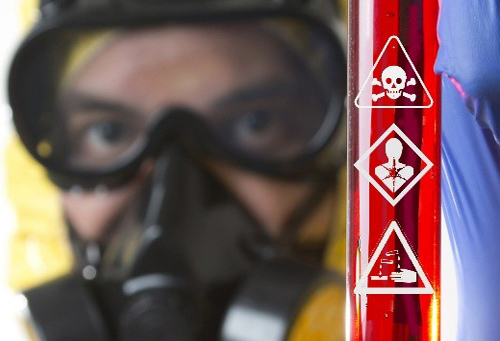
Kelly Rose
Editor

Kelly Rose
Editor
The advent of European CE standards in 1995 can only have been a good thing… can it?
True, undoubtedly they have served to improve levels of protection and safety in many industrial situations. But they can also be a double edged sword if not used in the right way. Perhaps there is now too much of a tendency to over-rely on standards and make too many assumptions that because workers are wearing approved product they are adequately protected. Many users fail to appreciate that CE standards merely define MINIMUM performance requirements whilst many applications demand a lot more than the minimum.
So such assumptions can be dangerous. Consideration of the situation with hazardous chemicals and the use and application of EN certified chemical suits is a typical example; selecting the most appropriate suit is about much more than simply selecting the cheapest suit that meets the right standard; being aware of the detail within a standard and what it is actually telling you can be important.

Some chemicals have an immediate effect when you are contaminated. If you suffer a splash of an acid for example you will immediately know – it will hurt! Chemicals with such easily and immediately recognised consequences as these are readily dealt with.
On the other hand many chemicals have no immediate effect. They can be ingested, inhaled, or absorbed through the skin with no apparent consequences. At least, not until months or even years later when the health problems, often serious, sometimes catastrophic, become apparent. These chemicals are more of a problem simply because if some penetrates inside your chemical suit and contaminates your skin you might not even be aware of it. You can carry on working and not even know you have come into contact with it. And do it again tomorrow...
Because of course, if a task, and a small amount of un-recognised contamination is occurring regularly – possibly on a daily basis so that the volume of contaminant could build up in the body - this an even more important consideration.
What makes this even more sobering is the fact that the toxicity of many chemicals is uncertain. A cursory glance of the safety data sheets of many substances in common industrial use today will confirm this with statements such as "May cause cancer" or "May damage the unborn baby".
Understanding this it is obvious that making assumptions about CE standards and chemical protection could result in sitting on a health time bomb. Certification to CE standards does not mean PPE is safe to use. It just means it meets minimum performance requirements. And yet over many years of talking to protective clothing users about chemical suits I have often heard comments along the lines of:-
“We’ve been using this suit for years and never had a problem”.
That’s a little like the old joke about the poor chap that fell from the roof of a skyscraper… as he fell to the ground, on each floor people kept hearing him say:-
“Well, so far so good!”
For this reason, the fact that passing the whole suit type testing for Type 3, 4 and 6 chemical suits (and also Type 5 dust protective suits) does not mean that NONE of the sprayed liquid has penetrated inside the suit is worth knowing. In fact a pass in these tests does allow a small level of penetration – the method involves creating a calibration stain and an assessment of whether the area of staining on the white undergarment in the test is greater or less than that of the calibration stain. By definition therefor some penetration is allowed.
Thus in selecting a chemical suit it might be important to understand this. Depending on the hazard presented by the chemical (i.e. is it immediate or long term? How toxic it is? And so on) and other factors such as the regularity of the task, the fact that a chemical suit might not be completely liquid tight, could be important.
You can discover more limitations of EN standards testing in our blog on the limitiations of CE testing.

Lakeland Industries Europe Ltd
Units 9-10 Jet Park 2
244 Main Road
Newport
East Yorkshire
HU15 2RP
UNITED KINGDOM
01430 478140